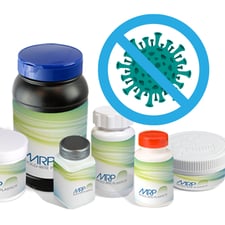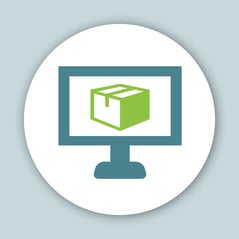
Plastic Closure Trends
Shelf impact was always the driving force behind packaging. But as consumer tastes and priorities have evolved, packaging priorities have evolved in parallel.
While packaging that is convenient, easy to open, and safer from tampering and damage continues to be critically important, environmental concerns are affecting consumer choices, and packaging that is recyclable or reusable is growing in importance. Products that offer sustainable packaging are being viewed more favorably among consumers and brands. While the sustainable trend took something of a back seat during the peak of the pandemic (as consumers were forced to purchase whatever they could find on the shelves or online), we expect sustainable packaging combined with convenience features (easy to open, easy to dispense product, and easy to hold/carry) to trend strongly throughout 2022.
At the same time, the pandemic has accelerated the already impressive growth rate of e-commerce. Manufacturers that are not embracing, innovating, and designing product for e-commerce are simply losing customers and market share. The brick-and-mortar and online worlds have merged, driven by how and where consumers are shopping. Our experience has been that retailers and manufacturers understand the need for a robust online presence but require assistance in optimizing packaging designs for e-commerce.
There are many private brands that have addressed these issues with impressive packaging. Kroger’s Simple Truth™ and Private Selections™ spices have beautiful packaging that positions the products as upscale. The clear container shows off the spices and communicates freshness and quality and utilizes convenient dispensing closures. Many gummy vitamin and supplement packages – OLLY™, Goli, Sugarbear™ – all make great use of color, package shape, and clean and precise labels to create identifiable branding.
Pandemic Impacts
 The Covid-19 pandemic has had a significant impact on our business and our customer relationships. As an essential supplier to the pharmaceutical, nutrition, personal hygiene and food segments, early on in the pandemic Mold-Rite Plastics instituted best practices and safeguards for employees, to protect their health and safety as they worked 24/7 to maintain the supply chain for products needed to combat the Coronavirus. From vitamins, nutraceuticals and over-the-counter pharmaceuticals, to soaps and sanitizers, our closures and jars have been key in helping to keep consumers safe and healthy.
The Covid-19 pandemic has had a significant impact on our business and our customer relationships. As an essential supplier to the pharmaceutical, nutrition, personal hygiene and food segments, early on in the pandemic Mold-Rite Plastics instituted best practices and safeguards for employees, to protect their health and safety as they worked 24/7 to maintain the supply chain for products needed to combat the Coronavirus. From vitamins, nutraceuticals and over-the-counter pharmaceuticals, to soaps and sanitizers, our closures and jars have been key in helping to keep consumers safe and healthy.
To meet the incredible increase in demand, our factories were able to increase production over 30% through operational efficiencies; we have invested significantly in building and production capacity expansions, and will continue to do so. We communicate more frequently with our manufacturing and distribution partners as we work closely together to meet packaging demand and shorten production lead times.
e-Commerce Considerations
 While the primary role of packaging in e-commerce is to protect and preserve the quality of the product, there is so much more that packaging can add to enhance the shopping experience and meet consumer needs. The online customer is asking for convenience not only in the ordering process, but also in the packaging experience: is it easy to open/frustration-free, easy to close and dispense, easy to hold and carry? Packaging that is hard to open, inconvenient or results in product damage will ultimately lead to consumer rejection. And, given that almost a third of products ordered online are returned due to damage, wrong item, or the product looking different than what was shown online, all these considerations continue to grow in importance.
While the primary role of packaging in e-commerce is to protect and preserve the quality of the product, there is so much more that packaging can add to enhance the shopping experience and meet consumer needs. The online customer is asking for convenience not only in the ordering process, but also in the packaging experience: is it easy to open/frustration-free, easy to close and dispense, easy to hold and carry? Packaging that is hard to open, inconvenient or results in product damage will ultimately lead to consumer rejection. And, given that almost a third of products ordered online are returned due to damage, wrong item, or the product looking different than what was shown online, all these considerations continue to grow in importance.
Along with lighter weight (to reduce shipping costs) and sustainability, durability can be a significant challenge. While a typical product on a store shelf may be handled half a dozen times, a product in the e-commerce channel can be handled up to 30 times before a customer receives it. In addition, retailers and manufacturers have to worry about conveyor belts, stacking/compression, roadway vibration, leaking product, and extreme temperatures and humidity. Air shipments with the extreme altitude changes can also cause products to expand or contract, potentially distorting packages and damaging products.
The need for durability can sometimes lead to heavier or additional packaging which impacts size (convenience), weight (shipping costs), and the environment. From a marketing and branding standpoint, e-commerce reduces the visual real estate for products, especially on smartphones. The virtual shelf also makes it harder for a package to stand out from the competition, due to its 2-dimensional nature.
Fortunately, there are solutions that Mold-Rite and other packaging manufacturers can provide to help customers navigate the requirements of ecommerce packaging, including product testing and custom package design that can withstand the rigors of e-commerce, while extending the brands recognition online. We have millions of closures, liners, and jars in-stock and ready to ship that are perfect for an e-commerce platform. These come in many sizes, colors and can be custom decorated in many ways, providing not only the protection needed, but also the visual appeal and the right size with deference to sustainability.
For liquids, we have a wide variety of heat induction liners that can properly seal the package to prevent leakage. For certain chemical products that can cause bottles to expand (bloat) or contract (panel) we have special vented liners that will prevent this from happening while also preventing the liquid from leaking. These vented liners also mitigate the bottle distortion and leakage due to temperature and altitude changes.
A package delivered right to the customer’s home is a great benefit. However, packaging that is hard to open, is unattractive or results in damage including breaks or leaks will negatively impact the online customer experience.
Sustainability
Environmental concerns are also growing among consumers, and packaging that is recyclable or reusable is important, along with eliminating excess packaging.
There are also a number of companies addressing sustainability though the use of recycled or ocean diverted content packaging: HUM® Nutrition, SmartyPants™, Seventh Generation™, Love Beauty & Planet™, rhyme & reason™, Method and LUSH, to name a few.
Our product design and production processes consider solutions that are not only business-friendly, but also environmentally friendly. With the design of lighter weight closures to reduce weight and material, we are committed to saving on shipping costs for e-commerce and reducing our environmental imprint with components that are recyclable. We are also leaders in our industry regarding the use of post-consumer/recycled resin (PCR) and are actively investigating alternative eco-friendly materials. While there is no magic material that is an adequate substitute for plastic, we continue to evaluate and investigate other sustainable resins, additives, and package concepts that may offer true eco-friendliness, such as starch and sugar-based bio-resins, biodegradable additives and compostable resins.
It is important to keep in mind that many non-plastic packaging options intended to be more sustainable (including glass, aluminum, and paperboard) have some serious shortcomings in terms of impact on the environment and might not be the most eco-friendly options when compared to plastic.
As a signee of the Ellen MacArthur Foundation Global Commitment, it is our goal to supply packaging that is eco-friendly while providing for food and product safety. Together with brands and manufacturers across the globe, we share a vision of a circular economy where the life cycle of a product is continuous rather than linear. This goal is certainly not without significant challenges. It’s going to require understanding of all aspects of being “fully sustainable” and awareness of the entire life cycle of the package. Meeting these goals is also going to require a fundamental reworking of the way we deal with packaging end-of-life issues – recycling, composting, reuse, etc. Mandating that percentages of recycled content be used is noble for the sustainability effort, but there aren’t yet sufficient avenues to collect and recycle the plastic and supply it in a way that is required by FDA and current packaging specifications. Many brand owners also don’t yet know enough about the limitations of sustainable materials – coloring PCR, lack of industrial composting, package performance, etc. – to make informed decisions in the product packaging design and development phase.



